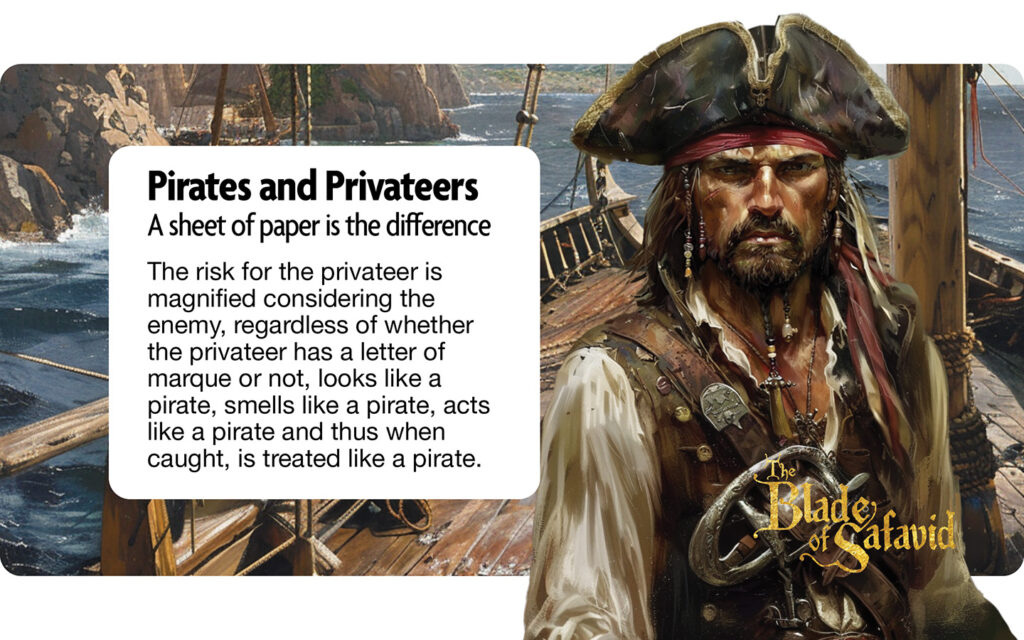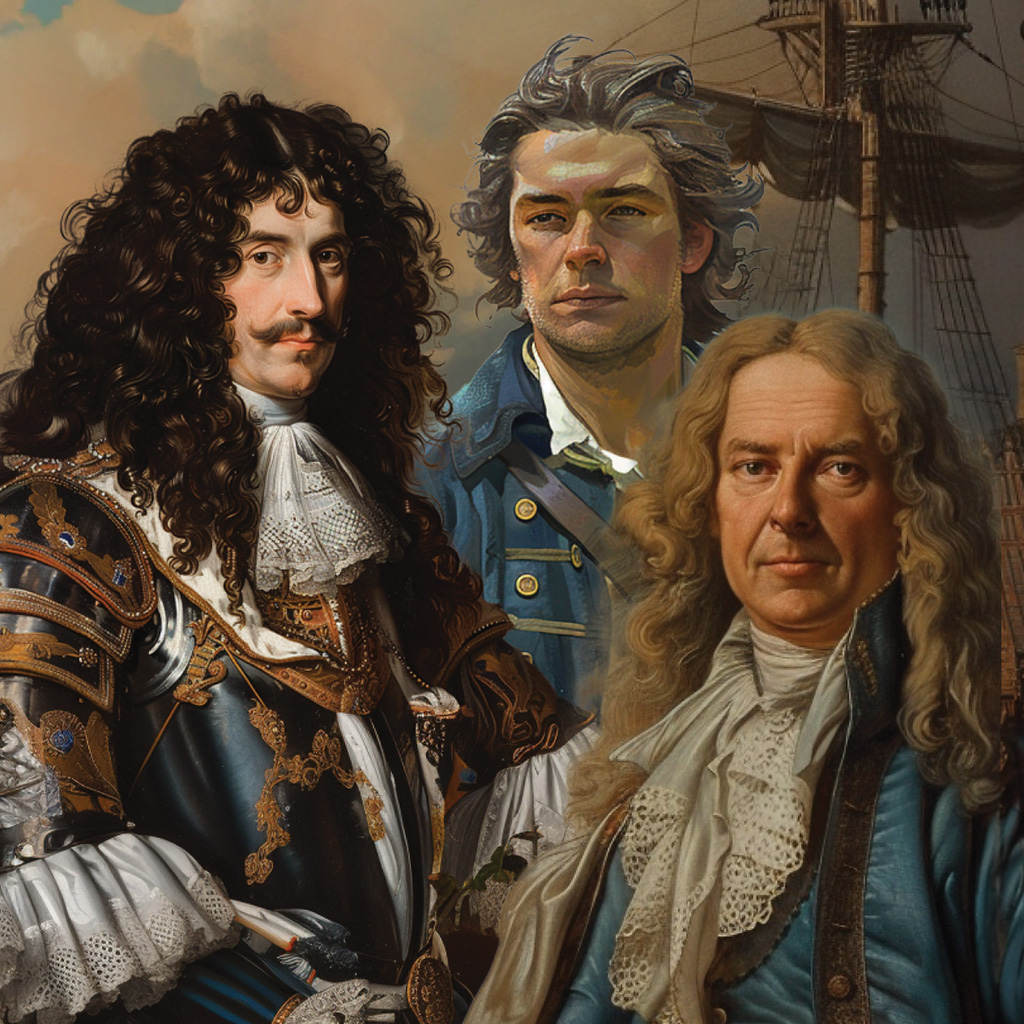
Think of a privateer as a legitimized pirate, legally sanctioned by a simple contract from a sponsoring government. The contract was usually in the form of a Letter of Marque.
The privateer was typically a private ship or an individual with authorization to attack enemy ships during a war. The difference between a privateer and a pirate was the thickness of a sheet of government-issued paper. You can see why many actual pirates started out as privateers and simply began attacking ships they were not governmentally authorized to seize.
Because local governments often lacked manpower and resources to carry out war or mess with their nation’s enemies, they would hire privateers. Privateers could be anybody; their background varied wildly. They were merchants or entrepreneurs seeking to make a profit. Some were just hired thugs a government legitimized to help capture an enemy’s wealth and obstruct an enemy’s ability to wage war.
Just like a pirate, a privateer’s duties included raiding merchant shipping from enemy nations, capturing their ships, and seizing their cargoes. Like pirates, privateers also raided enemy settlements and fought against navy ships.
Privateers were not usually paid regular wages. Their compensation was a share of their plunder. Officially, privateers were expected to return the captured plunder to their home port where the admiralty courts would condemn the plunder and auction off the spoils. The government kept the largest share and the rest of it went to the privateer and his crew as payment.
You can see it wouldn’t take much to tempt a privateer to resent the government taking a majority of the plunder, since the privateer was the one risking everything with no guarantee of success; whereas the government risked nothing. Kind of like today’s IRS.
The risk for the privateer is magnified considering the enemy, regardless of whether the privateer has a letter of marque or not, looks like a pirate, smells like a pirate, acts like a pirate, and thus when caught, is treated like a pirate – hanging at the gallows and their bodies were gibbeted outside the harbor as a warning to other pirates. Any legal protections were only effective with interactions with their own government and its allies.
In today’s world, a privateer could be seen as a seaborne militia of sorts. Not part of the sponsoring nation’s official navy but more an irregular military force.
A brief mention of management aboard a pirate ship.
Unlike an official naval vessel where harsh discipline and strict orders apply, the captain of a privateering vessel would still have to maintain control over his crew. On board a privateering ship, the captain and members of the crew were free to determine their own targets and destinations so long as they were legal under the terms of the Letter of Marque.
So as in the case of Henry Avery where privateering was the initial contracted purpose of the Charles II; once the original terms were violated by those sponsoring the journey, it wasn’t difficult to turn good men from privateering to piracy.
Making the transformation is as simple as choosing to ignore the terms of the Letter of Marque and begin seizing ships of any flag. As a pirate, they now served no nation, would not share any of the plunder, and were free to attack any ship under any flag. Often times the decision to turn pirate was made by the crew with a simple majority vote. In other cases when the captain wished to remain with their legal contract as a privateer, he faced mutiny, in which the crew would overthrow and replace him with a new captain, who would then engage in piracy.
Privateer-turned-pirates include such famous pirates as Captain Kidd, Henry Morgan, Blackbeard (Edward Teach), Sir Francis Drake, and lesser-known Robert Culliford
The 1800s brought privateering to an end. The Paris Declaration of 1856 outlawed the practice and was signed by the major European powers – including the naval powers of Great Britain and France. Because the United States claimed outlawing privateering put the United States at a disadvantage, being such a young nation, it rejected the declaration, as it lacked a large navy – but ultimately, the United States did not commission any privateers after 1815. With the rise of standing armies and navies, privateering became obsolete.
A bit of detail about a Letter of Marque.
In some cases, a Letter of Marque could simply be purchased. Other times they were even given out for free. They became an effective way to gain firepower without the usual costs of waging war and at the same time keeping pirates targeting an enemy rather than their own nation. A Letter of Marque also served as a tool where those nations issuing them could earn revenue from the letters’ sales and the percentage of the plunder.

